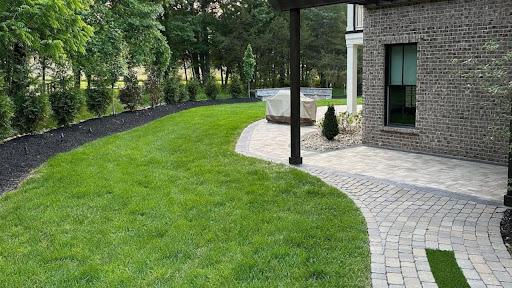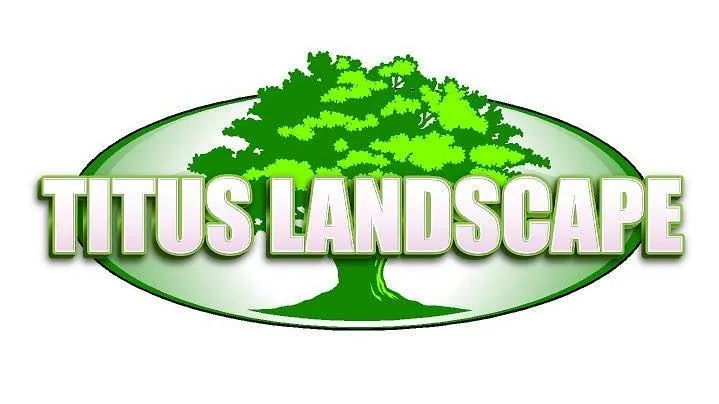Blogs

How to Plan a Landscaping Design for Low-Water Usage?
To plan a low-water usage landscaping design, select drought-tolerant and native plants, use mulch to retain moisture, install efficient irrigation systems like drip hoses, and incorporate water-efficient features such as rain gardens and permeable surfaces.
In the face of increasing environmental concerns and water scarcity, designing a landscaping plan that minimizes water usage has become essential. Efficient landscaping not only conserves resources but also creates an aesthetically pleasing outdoor space. By incorporating specific strategies, you can transform your yard into a low-water oasis while maintaining beauty and functionality.
Titus Landscape, a Murfreesboro-based company with a passion for creative and transformative landscaping, excels in bringing such visions to life. Our goal is to help you design a sustainable and visually appealing landscape that requires minimal water usage.
Key Takeaways
Opt for drought-tolerant and native plants to minimize water needs.
Implement smart irrigation systems and water wisely.
Use hardscaping elements to reduce the amount of plant-covered areas.
Apply mulch to retain soil moisture and regulate temperature.
Incorporate shade through trees or structures to minimize evaporation.
Limit traditional turf areas in favor of drought-resistant alternatives.
Apply xeriscaping principles to enhance overall water conservation.
Drought-Tolerant Plants: The Best Choices for Low-Water Gardens
Drought-tolerant plants are essential for crafting a low-water garden that remains vibrant and healthy. These plants are specially adapted to thrive in arid conditions, making them perfect for reducing overall water usage. Native and climate-adapted species such as succulents, agave, and creeping thyme are standout choices. Succulents like aloe and jade plant store water in their leaves, enabling them to endure long periods without rain. Agave’s thick, fleshy leaves are highly efficient in moisture retention, and creeping thyme acts as a ground cover that requires minimal upkeep and water. By choosing these plants, you can create a resilient garden that survives dry spells with minimal watering, saving both water and time.
Key Plant Choices:
Succulents: Aloe, jade plant
Agave: Variety of species
Creeping Thyme: Low-maintenance ground cover
Smart Irrigation Systems: How Technology Can Save Water
Smart irrigation systems represent a significant leap in efficient water management for your garden. These systems use advanced technology to optimize watering schedules based on real-time weather data. For instance, weather-based controllers adjust watering times according to rainfall and temperature changes, ensuring that plants receive just the right amount of water. Drip irrigation is another effective technology that delivers water directly to plant roots, minimizing evaporation and runoff. This targeted approach not only conserves water but also enhances the health of your plants by providing consistent moisture. Implementing smart irrigation can lead to substantial savings in water usage and reduce the amount of time spent manually watering your garden.
Technologies to Consider:
Weather-Based Controllers: Adjust watering based on local weather
Drip Irrigation: Direct water delivery to roots
Hardscaping: Enhancing Beauty While Conserving Water
Incorporating hardscaping elements into your landscape design is a smart way to reduce water usage while adding visual appeal. Hardscaping includes non-plant features such as patios, pathways, and decorative stones. These elements replace plant-covered areas, thereby reducing the overall amount of space that needs watering. A well-designed patio or stone pathway not only provides functional outdoor living areas but also minimizes the need for irrigation. By strategically using hardscaping, you can create a balanced and aesthetically pleasing garden that requires less maintenance and water, while still offering a beautiful and functional space.
Hardscaping Ideas:
Patios: Create functional outdoor spaces
Pathways: Enhance garden access and aesthetics
Decorative Stones: Add texture and interest
Mulching: The Benefits of Organic Coverage for Your Garden
Mulching is a vital practice for conserving water and maintaining a healthy garden. Organic mulch, such as wood chips, straw, or compost, serves multiple functions. It retains soil moisture by creating a barrier that reduces evaporation, thus decreasing the frequency of watering. Additionally, mulch helps suppress weed growth, which can otherwise compete with your plants for water and nutrients. It also regulates soil temperature, keeping roots cool during hot weather and warm during cooler periods. By applying a layer of mulch, you support plant health and significantly reduce water consumption in your garden.
Mulch Benefits:
Moisture Retention: Reduces evaporation
Weed Suppression: Minimizes competition for resources
Temperature Regulation: Maintains stable soil conditions
Xeriscaping Principles: Designing Landscapes for Water Efficiency
Xeriscaping is a landscape design approach focused on water conservation and efficiency. This method emphasizes selecting drought-resistant plants and improving soil quality to minimize water usage. Key principles of xeriscaping include incorporating native plants that are adapted to local climate conditions, using efficient irrigation techniques, and enhancing soil with organic matter to retain moisture. Xeriscaping not only conserves water but also reduces maintenance needs and improves the overall health of your landscape. By applying these principles, you can create a beautiful and sustainable garden that thrives with minimal water input.
Xeriscaping Strategies:
Drought-Resistant Plants: Choose species adapted to local conditions
Efficient Irrigation: Implement water-saving techniques
Soil Improvement: Enhance soil for better moisture retention
FAQs
What are drought-tolerant plants? Drought-tolerant plants are species that can thrive with minimal water. They are often native to arid regions and adapted to dry conditions.
How does a smart irrigation system work? A smart irrigation system uses weather data and sensors to adjust watering schedules automatically, ensuring plants receive the right amount of water.
What is the role of mulch in water conservation? Mulch helps retain soil moisture, suppress weeds, and regulate soil temperature, reducing the need for frequent watering.
How can hardscaping reduce water usage? Hardscaping elements like patios and pathways reduce the area covered by plants, decreasing the overall water requirements of the landscape.
What is xeriscaping? Xeriscaping is a landscaping approach that emphasizes water conservation through the use of drought-resistant plants, efficient irrigation, and other sustainable practices.
Create a Sustainable Oasis with Titus Landscape
Designing a landscaping plan for low-water usage is not only an environmentally responsible choice but also a way to enhance the beauty and functionality of your outdoor space. Titus Landscape is dedicated to helping you create a sustainable, water-efficient landscape that meets your aesthetic and practical needs.
Contact us now at Titus Landscape to get started on designing your perfect outdoor space. Our team of experts is here to guide you every step of the way, ensuring your landscaping project is both beautiful and sustainable.
THE BEST IN LANDSCAPE & OUTDOOR LIVING
Get your free quote today!
Contact Us
Rockvale, Tennessee 37153
Mon - Fri 8:00 am - 6:00 pm
Follow Us
© 2025 Titus Landscape. All Rights Reserved. Privacy Policy. Terms & Conditions. Web Design by Fused Media

